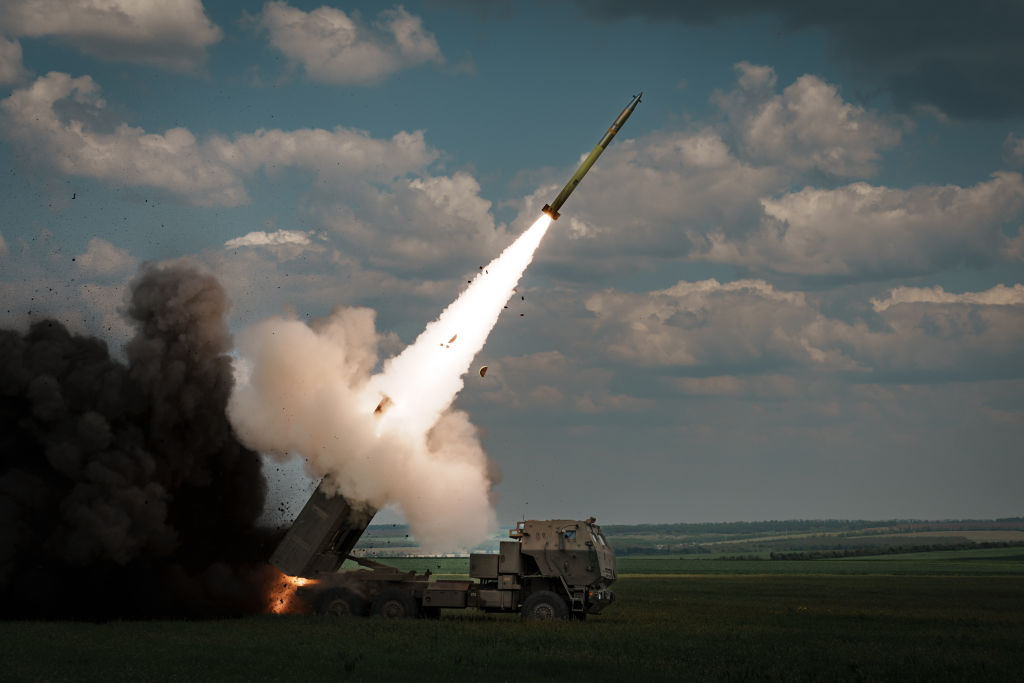Ukraine celebrated its forces taking the small but important village of Robotyne on Monday. Most eyes now face the fortified Tokmak Air Base nearby, and Ukraine promised further advances south and east. With Ukraine reportedly past the worst of the Russian defensive belts, the potential exists for Ukraine to advance more rapidly.
But as Russia attempts to force Ukraine back and Ukraine digs in, there’s an important element of Robotyne that is worth celebrating: The village is just 50 miles from the M14, the southernmost major road that Russia can use to resupply and reinforce its forces in and west of Melitopol.
This means that, as of right now, the potential technically exists for Ukraine to sever the land bridge using HIMARS strikes, even if it would much rather actually get its troops to the Sea of Azov.
Ukrainian strategy
Ukraine openly stated that it seeks to sever the land bridge Russia uses to supply and rotate troops in Melitpol, Crimea, and near Kherson. Ukraine successfully struck most of the bridges that connect Crimea to Russia, meaning that the land bridge is the last major supply artery or route of escape for those forces.
If Ukraine fully severs the land bridge before winter and Russia doesn’t pull its troops out, there’s a decent chance of mass surrenders during the winter as undersupplied Russians just give in.
The ideal way to sever the land bridge is for the Ukrainians to reach the Sea of Azov. Russia reportedly sent the 76th Guard Air Assault Division to try to plug the gap after Ukraine breached a major defensive belt. Ukraine thinks that belt was the hardest and, from here, its advance will likely accelerate.
If so, that’s ideal. But technically, Ukraine can sever the land bridge from where it’s at. But another seven to 10 miles would be much better, as well as achieving a wider front, per Jan Kallberg speaking to Insider.
Control by fires
That’s because Ukraine doesn’t really need to hold a section of every supply route Russia uses. It only needs to be able to block Russia’s use of each route. Since HIMARS has a 50-mile range, Ukraine can technically sever the M14 as a supply route from Robotyne, cutting off Russian forces.

So why hasn’t it?
Well, Ukraine could just barely reach the M14 right now from its most forward position. That would leave a HIMARS extremely susceptible to counter-battery fire or even Russian small arms. And if the HIMARS is destroyed or forced to withdraw, then the M14 would be back open.
To really cut traffic on the M14, Ukraine needs to be able to shoot and scoot HIMARs between multiple firing positions. If it reaches its stated next two targets on that axis of advance, Novopokrovka and Ocheretuvate, then HIMARS could threaten over 100 miles of the M14 and all entrances and exits from Melitopol from multiple firing positions. This “deep supporting fire” would hinder Russian supply to many thousands of troops.
Any further that Ukraine can penetrate increases the number of positions that artillery can fire. It also increases the number of systems that could hit each road. Getting past Rozivka would allow heavy howitzers to fire alongside HIMARS to control the M14.
(Of course, if the U.S. sent Army Tactical Missile Systems to Ukraine, then it could sever the M14 right now. The ATACMS 185-mile range allows for strikes from Dnipro to hit Crimea.)
The road ahead after Robotyne
Despite the slow pace of the current offensive and the seeming frustration of many in the West, Ukraine is doing a solid job of advancing through some of the most heavily fortified land that has ever existed. And, as David Petraeus and Frederick Kagan pointed out in an op-ed August 24, defenders often hold firm right up until the moment they don’t.
If Russian forces already facing low morale see the escape hatch closing as Ukraine pushes further and further toward the Sea of Azov, the Russians could suddenly break and run for the exits. Already, HIMARS can threaten the last route out.


